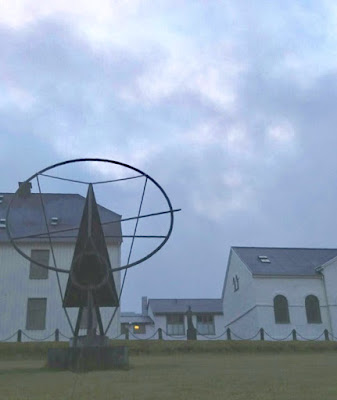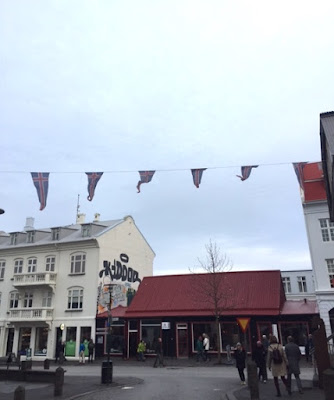Quando se anda pelas ruas de Reykjavík, parece que estamos em um museu de arte. Em cantos inesperados, encontramos esculturas de artistas famosos e estátuas de importantes figuras da sua história.
A primeira, e talvez mais importante, por ser um marco na cidade é a escultura de aço O viajante do sol feita por Jón Gunnar Arnarson, inaugurada em 1990, no aniversário de 200 anos da capital. Com a aparência de um barco viking, o autor considera que é mais um barco dos sonhos que homenageia o sol.
Walking by the streets of Reykjavík is like walking into an open air Art Museum , filled with sculptures and statues of important historical figures.
The first , and maybe the most iconic one, is the steel sculpture The Sun Voyager by Jón Gunnar Arnarson. The sculpture was unveiled in 1990 to commemorate the 200th anniversary of the city of Reykjavík.
Although it resembles a Viking ship, the artist intended it as a dream vessel an ode to the sun.
Ingólfur Arnarson
Ingólfur Arnarson foi o primeiro nórdico a colocar os pés na Islândia em 874 DC após sair da Noruega. De acordo com a história, foi ele que deu o nome da Reykjavík ao que agora é a capital do país. O nome significa baía da fumaça, em referência ao vapor das fontes geotérmicas que hoje em dia aquecem a cidade.
Ingólfur Arnarson was the first Norse man to settle in Iceland in 874 AD, leaving Norway due to a blood feud he was involved in. He resided where the capital is now, and gave it the name of Reykjavík - Smokey Bay - as a reference to the steam from geothermal springs which heat the city today.
Menina feita em 1950 por Ólöf Pálsdóttir
Girl by Ólöf Pálsdóttir (1950)
O Carregador de água. Escultura de um dos mais famosos artistas da Islândia do séc. 20, Ásmunder Sveisson, faz uma homenagem à classe de carregadores de água, responsáveis por levar água para a cidade, quando ainda não havia canalização.
The Water Carrier was sculpted by Ásmunder Sveisson, one of Iceland's greatest artist of the 20th century. The water carriers were a class of people responsible for bringing water to the inner city before the implementation of modern methods.
Estátua de Bronze de Steinum Thorarinsdottir
Bronze statue by Steinum Thorarinsdottir
O músico feita em 1970 por Ólöf Pálsdóttir. Encontra-se na frente da Harpa - sala de concertos.
O violoncelista Erling Blöndal Bengtsson foi o modelo para a escultura. Esta escultura, até a construção da Harpa, mudava de localização, seguindo os passos da Orquestra Sinfônica.
The Musician by Ólöf Pálsdóttir (1970) at Harpa Concert Hall
The model was the cellist Erling Blöndal Bengtsson, who played constantly for the artist as she worked on the sculpture.
A face do sol feita em 1961 por Ásmandur Sveisson
O círculo é o sol, o triângulo é a terra e as linhas que cortam a escultura são os raios do sol. Esta escultura é uma ode ao calor do sol.
The Face of the Sun by Ásmandur Sveisson (1961)
The circle is the sun, the triangle is the earth and the lines that cut through are the rays of the sun. This sculpture is an ode to the sun's precious warmth.









































